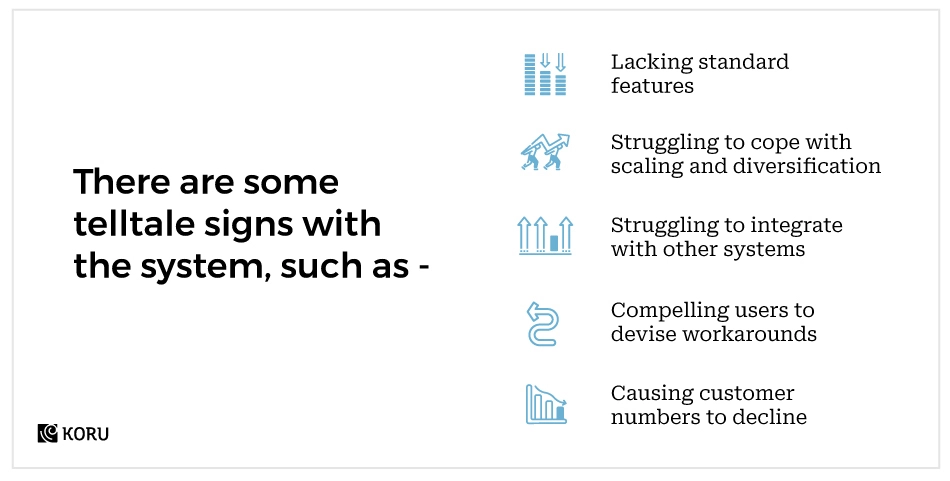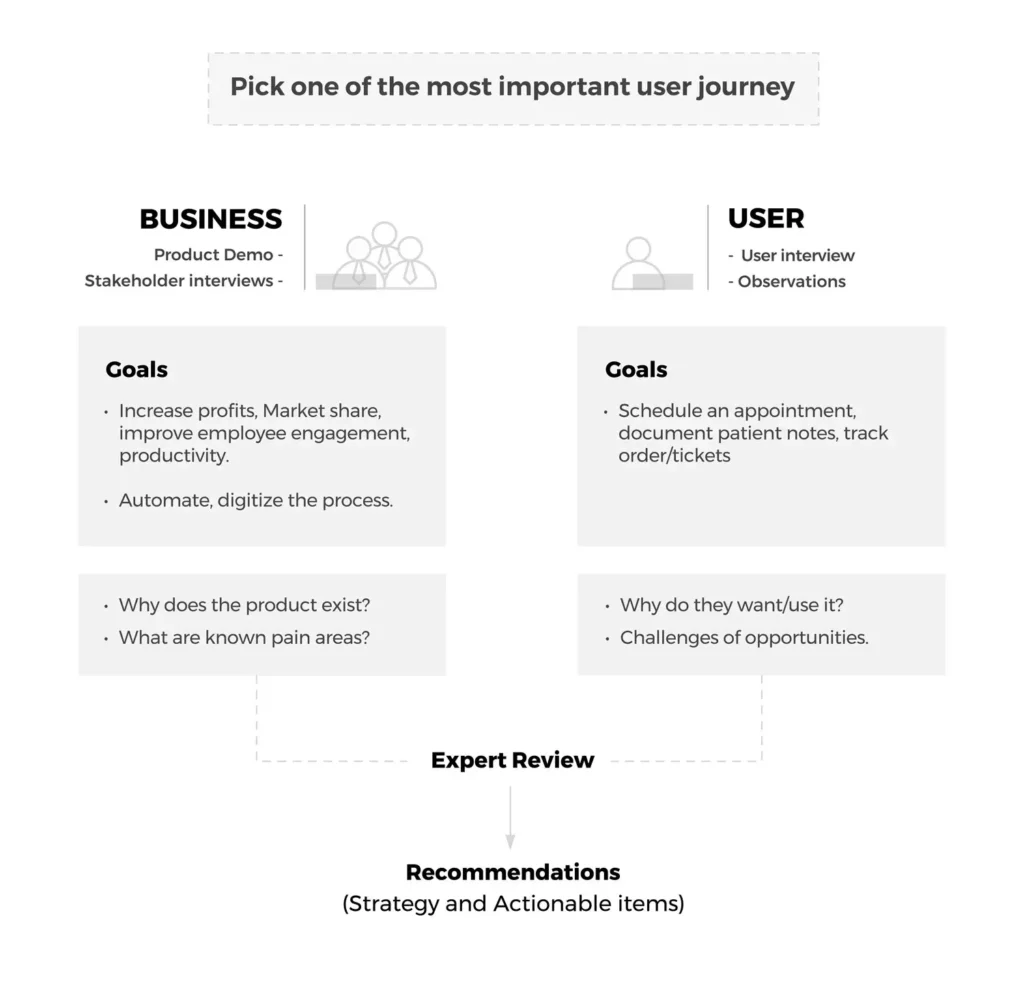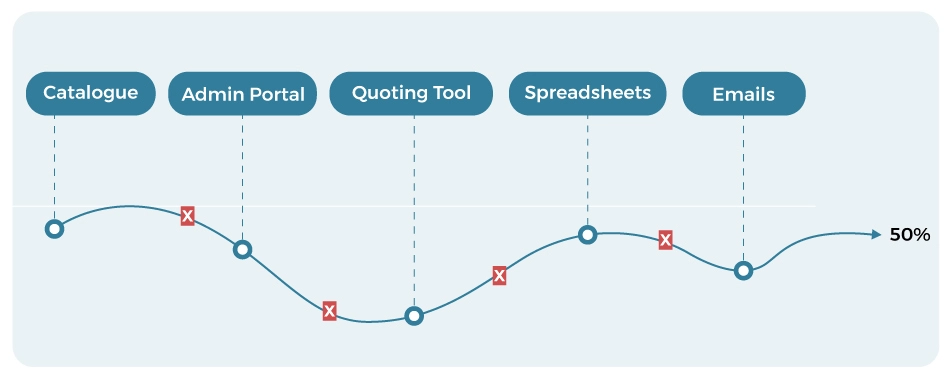In the movie “The Blues Brothers,” there’s a particular scene where John Belushi visits Dan Aykroyd’s apartment in Chicago, which is situated just three feet away from train tracks. As they sit down, a train zooms by, causing everything in the room to shake. When John asks how often this happens, Dan responds:
“It happens so frequently that you’ll eventually get accustomed to it.”
Tony Fadell echoes a similar sentiment in his Ted talk “The first secret of design is… noticing,” that:
Human beings get accustomed to everyday things really fast.
This behavior is largely influenced by the brain’s limited capacity to process information and the phenomenon called habituation. It’s when the brain encodes everyday activities into habits, allowing it to make room for learning new things.
Habituation isn’t always bad. But sometimes, it stops you from noticing or fixing existing problems, and that’s what’s bad — especially for product leaders, designers, and innovators. It’s their job to see those everyday things, feel them, and try to improve upon them.
Conducting UX audits is an effective way to identify potential problems and take the first step towards addressing them, among numerous other business benefits.
But more on that later.
Let’s first get the basics right.
What is a UX Audit?
A UX Audit is a professional evaluation of your product’s usability and user experience. It involves using a UX audit checklist to examine and rate the existing user journeys, revealing areas for improvement.
As businesses and digital needs evolve, products may fall short of expectations, even if they were initially designed to fulfill them. So, how can business leaders identify when their product isn’t performing up to par?

While the signs that your product needs a UX audit can be apparent, it is actually difficult to understand the true reasons why they arise.
For instance, burnout in healthcare providers had been making headlines in the healthcare industry for years. But, it was only upon analyzing their workday that it was discovered that the complex functioning of the EHR system they used was to be blamed. Physicians spent all their spare time adding notes and data into the EHR – a system with a host of usability issues.
And therein lies the value of a UX audit. As a product leader, it helps you evaluate where your system stands and the reasons why it falls short of fulfilling expectations.
Here are five ways in which a UX audit can boost your RoI
It assesses product capability based on the business and its goals
A UX audit is conducted by a team of evaluation experts. They make use of a host of approaches, metrics, and comparisons to assess the capability of your product. So, what is it that actually goes on during an audit exercise?

Keeping your business goals and your product performance expectations as a baseline, the UX audit –
- Defines typical users including their persona, needs, and goals.
- Establishes the specific problem your digital products solve and how it does that.
- Reviews existing user stories and feedback to capture lags and pain points.
- Conducts user observations and stakeholder interviews to understand how they interact with the system.
- Evaluates its performance based on responsiveness, usability, navigation, clarity, and more.
It provides actionable areas of improvement
In his Ted talk, Tony Fadell also discussed his experience of working on identifying and solving user issues with the iPod.
One such issue was that in the 1990s, it was common that people needed to charge a new gadget before they could use it. frustrating after eagerly anticipating its arrival.
At the time, it was a standard practice to run a product with a hard drive for around 30 minutes to ensure its long-term functionality for customers. However, Fadell’s team went above and beyond by running the product for over two hours instead.
It not just enabled them to provide fully charged devices in packaging but allowed for a higher quality product and made it a lot easier to thoroughly test the iPods and ensure they would be excellent for customers. This approach proved successful, and today, most battery-powered products come fully charged upon purchase.
Imagine if they hadn’t identified this issue the “charge before you” concept would have been a norm even in 2023.
A UX audit analyzes user journeys to pinpoint areas of improvement. The report provides detailed recommendations for enhancing UX, including speed, responsiveness, and navigation. It prioritizes improvements based on your specific business needs. Here’s what a sample UX audit report looks like.
Improvements guided by data, rather than guesswork
The UX audit report provides valuable insights on making rapid changes that aren’t arbitrary but are based on hard data and analytics.
One of our clients, a telecom company, faced similar issues where their processes were guided by random guesswork. It is a common practice in telecom companies to assume that the client experience is a compilation of independent touchpoints. That customer service, sales progress, and promotional materials are somehow unrelated to each other. But in reality, the product journey and the customer experience are two sides of the same coin.

On undergoing a thorough UX assessment, it was found that:
- There was a misalignment of their existing portal’s product workflows with that of the business.
- Switching between multiple online and offline tools was costing productivity, error-prone data entry, and confusion.
- Usability issues and challenges made the portal difficult to use for new as well as legacy users.
Based on these findings and the workflow-specific challenges, we were able to choose specific areas for enhancements and propose solutions that make for a standardized product experience.
Impact: The agent productivity soared by 32%.
Recreating workflows and mapping user journeys help in revealing actual pain points – points that often are a revelation to even product leaders. And it doesn’t end there – the product knowledge is then analyzed alongside the business requirements to set an improvement plan focused and caters to needs.
There’s also a roadmap of future improvements
In an interview with Mind The Product, Cassidy Fein, Sr Director of Product at Pendo, talks about product roadmaps as an ever-evolving thing rather than a static document that someone created years ago. She describes her approach toward creating roadmaps, and at the end, she adds:
But that’s really what we’re doing for now, you know, talk to me in six months.
And I find this approach absolutely winning because it gives product leaders a scope to improve more frequently than not. In fact, conducting regular UX audits (say, every year or every time you want to add a new feature) provides a prioritized list of improvements.
This list covers both immediate remedial measures, along with additional metrics and feedback you can use to align future improvements. These could be time-consuming workflows, confusing interactions, or any pain points bogging your system down – and achieving maximum RoI. Thus, it enables you to make informed decisions about ensuring product performance in the long run.
This is what you’ll get to see
By now, you’ve had a fair idea of the transformative potential of a UX audit. But what would the results translate into in terms of RoI? Here’s what you can expect over time once the recommendations are applied –
- Your product will have a more natural and intuitive flow, which would make for smooth navigation. Users would be able to accomplish their intended actions with ease. Think of products like Salesforce, Slack, or Zoho with intuitive interactions.
- You will have a better understanding of user needs and their pain points, which will enable you to improve the experience for them. In terms of customer experience, this knowledge is a definitive business edge.
Maximize Your Returns Through UX Audits: Start Before It’s Too Late
A wise person once said, “A UX audit a day keeps the usability issues away.” Okay, maybe no one has said that before, but it’s still true!
It helps you fix the problems in your workflows efficiently, increase adoption rates, and create an experience your users will love. The costs of persisting with a poorly designed product can be astounding. A UX audit is budget-friendly and time-bound, which makes it the perfect method to understand and resolve usability issues.
Don’t let a poorly designed product burn a hole in your pocket – a UX audit can help you put out the flames. If you need help understanding UX audits better, talk to us, and we’ll do our best to help.










